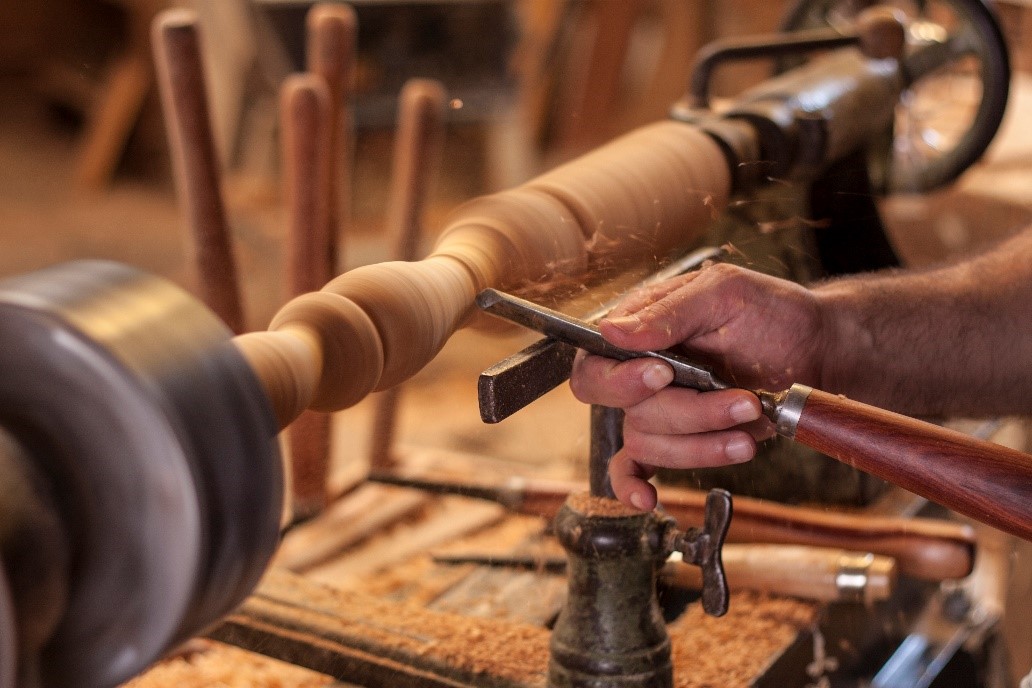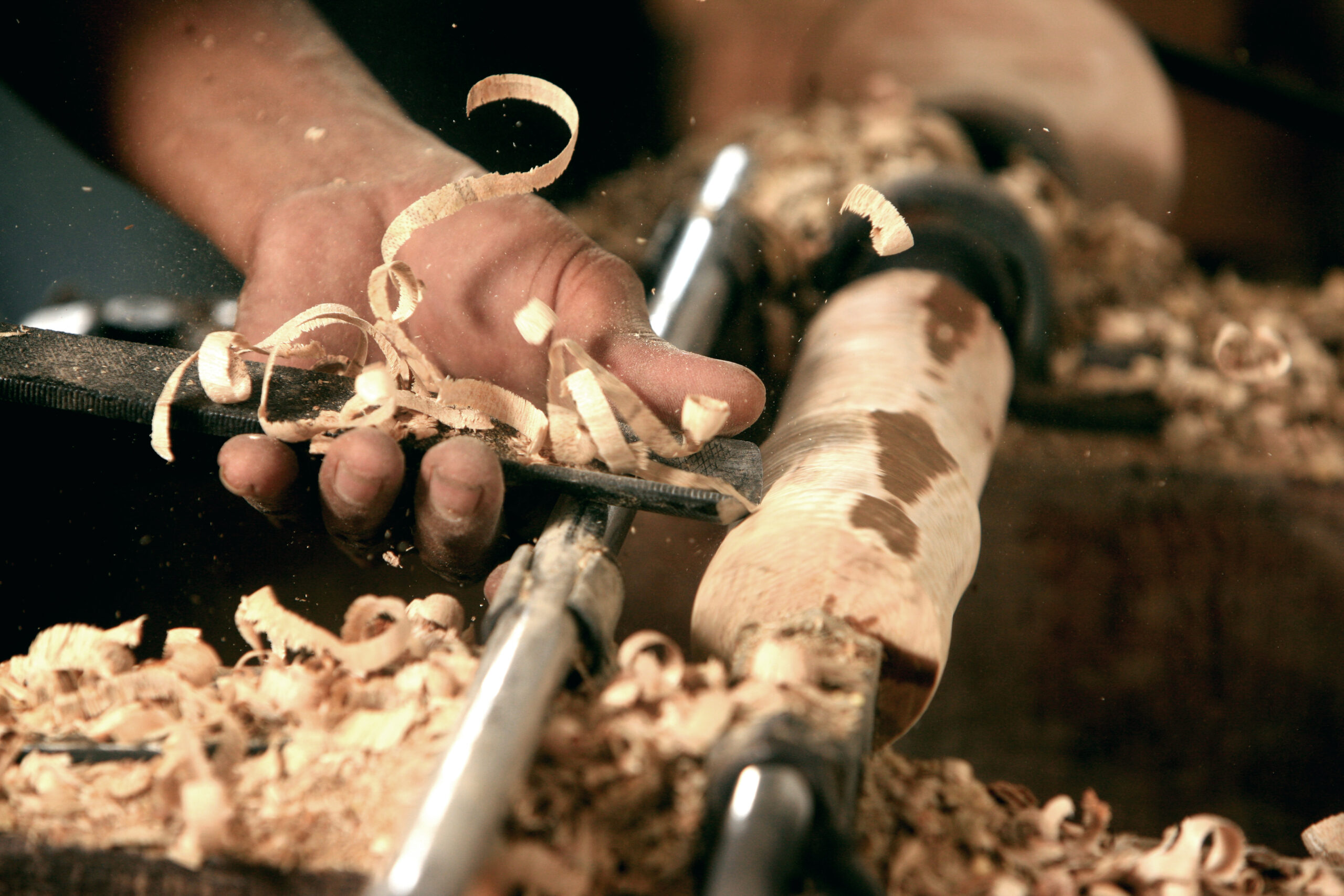Have you ever wondered what exactly woodturning equipment is? Well, get ready to dive into the world of woodworking and discover the tools that make this craft possible.
Woodturning equipment refers to the specialized tools used to shape and manipulate wood into beautiful and functional objects. From the lathe that spins the wood to the chisels and gouges that shape it, each piece of equipment plays a crucial role in the woodturning process.
Whether you’re a beginner or a seasoned woodturner, understanding the different types of woodturning equipment is key to mastering this craft and unlocking your creativity. So, let’s take a closer look at the essential tools that make up the world of woodturning.

The Basics of Woodturning Equipment: Exploring a Versatile Craft
Welcome to the world of woodturning equipment! If you’ve ever marveled at the intricate designs and shapes of wooden objects like bowls, pens, and furniture legs, then woodturning is the craft for you. In this article, we’ll delve into the intricacies of woodturning equipment, exploring the tools and machinery used by artisans to create stunning and functional wooden masterpieces. Whether you’re a woodworking enthusiast or a beginner looking to try your hand at a new hobby, this comprehensive guide will walk you through everything you need to know about woodturning equipment.
What is Woodturning?
Woodturning is a centuries-old craft that involves spinning a piece of wood on a lathe and using cutting tools to shape the wood into various forms. It is a technique that allows woodworkers to create symmetrical and curved designs that are not easily achievable with traditional woodworking methods. Woodturning is often used to create functional objects like bowls, vases, and spindles, as well as decorative items such as ornaments and sculptures. The process of woodturning requires precision, skill, and the right set of tools. Let’s take a closer look at the essential woodturning equipment.
The Lathe: The Heart of Woodturning
At the center of every woodturner’s workshop is the lathe, the primary piece of equipment that makes woodturning possible. The lathe is essentially a machine that rotates the piece of wood while allowing the woodworker to shape it with various cutting tools. There are different types of lathes available, including benchtop lathes, floor-standing lathes, and mini lathes, each with its own advantages and applications. The key features to consider when choosing a lathe are the swing capacity (the maximum diameter of wood it can handle) and the distance between centers (the maximum length of wood it can accommodate). It’s important to invest in a reliable and sturdy lathe that suits your project needs.
Once you have your lathe set up, you’ll need some essential accessories to enhance your woodturning experience. These include a faceplate, which attaches to the lathe’s headstock and allows you to mount bowls and other flat-bottomed items, and a chuck, which holds the wood securely while allowing easy removal and repositioning. A tool rest, mounted on the lathe bed, provides support for your cutting tools and enables smooth and controlled movements. Additionally, a tailstock with a live center or a dead center is used to support longer pieces of wood and maintain stability during turning.
Now that we have covered the centerpiece of woodturning equipment, let’s move on to the essential cutting tools that every woodturner needs in their arsenal.
The Essential Cutting Tools for Woodturning
Woodturning cutting tools come in a variety of shapes and sizes, each designed for specific tasks and cutting techniques. The most common cutting tools used in woodturning include gouges, scrapers, and parting tools.
Gouges are versatile tools that feature a curved cutting edge and a U-shaped profile. They are used for roughing out the wood, creating concave shapes, and smoothing the wood surface. Gouges come in different profiles, such as spindle gouges for detail work, bowl gouges for shaping bowls, and roughing gouges for initial wood removal.
Scrapers, as the name suggests, are used for scraping the wood surface to create a smooth finish. They have a flat or curved edge and are excellent for refining shapes and removing small imperfections. Parting tools, on the other hand, are used for cutting and separating the wood into separate pieces. They are particularly useful for creating grooves, tenons, and other features that require precise cuts.
Other Essential Woodturning Equipment
In addition to the lathe and cutting tools, there are several other pieces of equipment that will enhance your woodturning experience. These include:
- Sharpening System: Keeping your cutting tools sharp is crucial for achieving clean and precise cuts. A sharpening system, such as a grinder or a sharpening jig, will help you maintain the sharpness of your tools.
- Woodstock: A woodstock, also known as a blank or a workpiece, is the raw piece of wood that you will be turning on the lathe. It is important to choose the right type of wood for your project, considering factors such as grain pattern, hardness, and dimensional stability.
- Safety Equipment: Woodturning involves working with sharp tools and rapidly spinning wood, so safety should be a top priority. Safety equipment such as safety goggles, a face shield, and a dust mask should be worn at all times to protect your eyes, face, and respiratory system.
- Finishing Supplies: Once you have shaped your wood piece, you’ll need to apply a finish to protect and enhance its appearance. Finishing supplies like sandpaper, sealers, stains, and finishes are essential for achieving a smooth, polished, and durable result.
Enhancing Your Woodturning Skills
Now that you have a solid understanding of the equipment needed for woodturning, it’s time to embark on your woodturning journey. Remember, woodturning is a craft that requires practice, patience, and continuous learning. Take advantage of online tutorials, woodworking classes, and community workshops to refine your skills and explore new techniques. Joining a woodturning club or community can also provide support, inspiration, and valuable feedback from fellow woodturners.
Conclusion
Woodturning equipment is the gateway to a captivating craft that allows you to transform ordinary pieces of wood into extraordinary works of art. Understanding the different tools and equipment involved will set you on the path to becoming a skilled woodturner. Remember to prioritize safety, invest in quality equipment, and embrace the joy of creating unique wooden pieces with your own hands. So now, pick up your cutting tools, turn on your lathe, and let your creativity spin!
Key Takeaways: What is Woodturning Equipment?
- Woodturning equipment consists of tools and machines used to shape wood into various forms and designs.
- Popular woodturning tools include gouges, scrapers, and parting tools.
- A lathe is the primary machine used in woodturning, allowing the wood to be rotated and shaped.
- Other equipment such as chucks, faceplates, and sanding tools are also essential for woodturners.
- Woodturning equipment enables artists and hobbyists to create bowls, vases, spindles, and other wooden objects.
Frequently Asked Questions
Are you curious about woodturning equipment but unsure where to start? Look no further! We’ve compiled a list of frequently asked questions to help you understand the basics of woodturning equipment, from tools to safety measures.
Q: What are the essential tools needed for woodturning?
Woodturning requires a few key tools to get started. These include a lathe, which spins the wood; various turning tools such as gouges and scrapers; a chuck or faceplate to hold the wood securely; and safety equipment like goggles and face shields. It’s important to invest in good-quality tools to ensure safe and efficient woodturning.
Some additional tools that can enhance your woodturning experience include calipers for precise measurements, a parting tool for cutting off the wood, and a sandpaper holder for smooth finishing. Remember, the right tools are essential for achieving the best results in your woodturning projects.
Q: What safety precautions should I take while using woodturning equipment?
When working with woodturning equipment, safety should always be a top priority. Start by wearing appropriate protective gear such as safety glasses, a dust mask, and ear protection. These items will shield you from wood chips, dust, and noise.
Additionally, always make sure your work area is well-lit and free from clutter. Keep your tools sharp and clean, as dull or damaged tools can increase the risk of accidents. It’s crucial to follow the manufacturer’s guidelines for each tool and avoid wearing loose clothing or jewelry that can get caught in the spinning wood. By taking these safety precautions, you can enjoy woodturning while minimizing any potential risks.
Q: Can I use any type of wood for woodturning?
While you can use various types of wood for woodturning, some are more suitable than others. The ideal wood for turning should be straight-grained, free from cracks or knots, and have a consistent density. Common types of wood used in woodturning include maple, ash, cherry, and walnut.
It’s important to note that green or freshly cut wood is easier to work with as it is softer and more pliable. However, green wood needs to be dried properly to prevent cracks and warping. Alternatively, you can also use seasoned or kiln-dried wood, which has already gone through the drying process. Experimenting with different types of wood can add variety and uniqueness to your woodturned projects.
Q: How can I maintain and care for my woodturning tools?
Maintaining your woodturning tools is essential for their longevity and performance. After each use, clean the tools thoroughly to remove any wood chips or debris. Use a wire brush or sandpaper to remove any rust or buildup on the metal parts.
It’s also vital to keep your tools sharp. Regularly sharpen the cutting edges using a sharpening system or honing stone. Properly storing your tools is equally important to prevent damage. Consider using a tool rack or case to keep them organized and protected from moisture or accidental knocks. By maintaining and caring for your woodturning tools, you’ll ensure they remain in excellent condition for many years to come.
Q: Are there any woodturning safety guidelines I should follow?
Yes, there are some important safety guidelines to keep in mind when woodturning. First and foremost, always read and follow the manufacturer’s instructions for all equipment and tools. This will ensure you are using them correctly and safely.
It’s also crucial to pay attention to the speed settings on your lathe and adjust them accordingly for different wood sizes and turning techniques. Always approach the spinning wood from the lower side to avoid accidents, and never force or overstrain the tools while cutting or shaping the wood. Lastly, be patient and take your time when learning new techniques to prevent mistakes or injuries. Remember, safety should be your top priority in every woodturning project.

Beginners Guide to Woodturning Tools
Summary
Woodturning equipment is used to create beautiful and functional objects out of wood. This type of equipment includes a lathe, chisels, and safety gear.
Using a lathe, which spins the wood, you can shape it into different forms. Chisels are then used to cut and remove material, allowing you to create intricate designs. It’s important to wear safety gear like goggles and gloves to protect yourself while working with woodturning equipment. Overall, woodturning equipment provides a fun and creative way to transform a simple piece of wood into a unique and personalized masterpiece.
